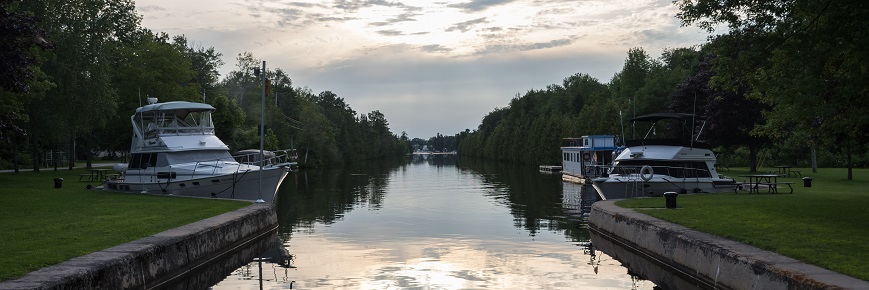
Overnight mooring
Trent-Severn Waterway National Historic Site
Spend the night on a historic Trent-Severn Waterway
Experience a unique stay on the water at an affordable price. Relax on your boat or step onto land and enjoy various nearby activities.
- Save money with a low-cost overnight stay
- Access to bathrooms (check with the lock operators)
- Access to surrounding attractions and services
Know before you go
- A mooring permit is required to stay overnight
- Mooring docks can not be reserved and space is not guaranteed
- Mooring is offered on a first-come, first-served basis
Permits and passes
Permits are available for purchase at most lock stations.
Learn more about lockage and mooring permits
Purchase permits by phone:
Phone number:
1-888-773-8888
Visitor guidelines
Before staying overnight at a National Historic Site, familiarize yourself with the rules and regulations that ensure these places stay protected and enjoyed for years to come.
Displaying permits
Seasonal mooring, lockage and/or transit decals must be affixed to the vessel. Other permits must be available for verification or validation by lock staff.
More information about boating permits
Your responsibility
Boaters are responsible for the care of their own vessels during the mooring period. Vessels should not be left unattended for long periods of time.
Maximum mooring time
Mooring periods vary at different lock stations and bridge stations. Vessels having reached the maximum length of stay cannot return to the same wharf or wall for 48 hours, unless directed otherwise by lock staff.
Mooring periods by lock
Check-in / check-out
Boaters wishing to moor overnight at a lockstation must check-in with lock staff upon arrival. Check-out time in the morning is 11:00 am. Boaters must leave the wharf area (wall) by 11:00 am the day following the last permitted mooring night.
Additional mooring space
Blue lines are often used for additional mooring spaces following the day's last lockage. However, boaters must move their vessels off the blue line before the lock opens the next day.
Rafting
Rafting of vessels is only permitted at lock and bridge stations from the close of navigation for the day to opening the next morning. Boaters on the wall are not required to accept rafting. Rafted vessels are charged the same mooring fee as vessels on the wall.
Towing
Vessels towing a boat (aluminum, fiberglass, rubber dinghy or personal watercraft) regardless of size, with or without an engine, will require a lockage permit for the towed craft. A mooring permit for a towed vessel is also a requirement.
More information on permits and fees
Camping
Boaters who pay for overnight mooring are allowed to camp on land free of charge, at the discretion of the lock master.
Related links
- Date modified :